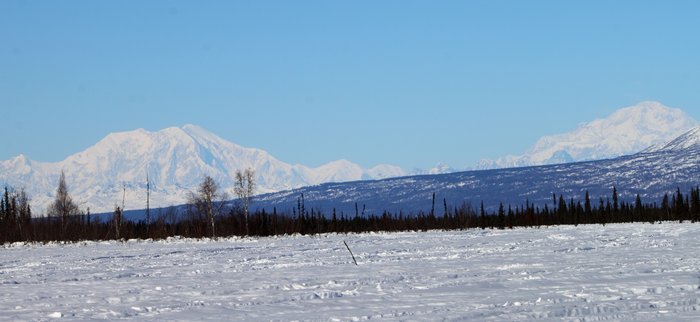
Summary
The Alaska Department of Natural Resources has decided to initiate a coal lease sale in Southcentral Alaska, near the town of Skwentna. The leases cover 13,175 acres and are estimated to contain 257.9 million short tons of subbituminous coal. The leases went on sale January 12th, 2015.
Background
In October 2012, the Alaska Department of Natural Resources (DNR) issued a preliminary notice of decision regarding a “Competitive Coal Lease Sale In the Canyon Creek Area, Alaska”. This sort of decision is also known as a “best interest finding” in which the state determines that opening this area to coal leasing is in the best interest of Alaska. This process was triggered by a request to the DNR from the Alaska Energy Corporation who expressed interest in exploring coal resources in this area. In July 2013, the state officially announced that the sale would move forward.
The proposed leases are located on the east flank of Dickason Mountain, about 18 miles southwest of Skwentna, in southcentral Alaska. The leases are about 40 miles north of the proposed Chuitna Coal Project, and 15 miles east of the Whistler gold/silver/copper mining prospect. In addition, the leases are near the proposed gas pipeline leading to the Donlin Gold Prospect, which could be a potential source of power for the project.
The Canyon Creek leases are far from most existing infrastructure, therefore transportation of coal from a mine is a significant consideration. In the best interest finding, the state discussed a road (possibly in collaboration with Whistler), a rail spur to Port MacKenzie, and a road/conveyor to the export terminal of the proposed Chuitna Coal Project. This suggests that the Canyon Creek project may only be viable if the Chuitna proposal actually becomes a mine.

There are many significant environmental and economic concerns with a proposal to mine coal in Canyon Creek, most of which are equally applicable to any coal project (e.g. effects of coal mining, combustion wastes, reclamation, climate impact, and true cost). More specifically, Canyon Creek contains several resident and anadromous fish populations, including all 5 species of Pacific salmon. In their comments on the decision, the Alaska Department of Fish and Game (ADFG) expressed their desire to have a 100-foot buffer around all anadromous streams (in contrast to the 50-foot buffer on the Kenai Peninsula), to conduct a comprehensive fish survey, and to ensure that transportation routes don’t affect various wildlife refuges and subsistence activities.
Pros and Cons
As part of the best interest finding, the Alaska DNA is required to weigh the costs and benefits of a project. The following table is copied directly from the DNR report (4.7 MB), followed by some further discussion of what’s missing here.
| Potential effects of coal exploration, development, and production. (DNR, 2012) Potentially Positive Effect | Potentially Negative Effect |
|---|---|
| State tax and royalty revenues; local property and sales taxes | Land use conflicts, such as restriction of access for recreational activities |
Disturbance to fish and wildlife (including loss or degradation of fish and wildlife and habitat )
Road and airstrip construction or improvement, leading to improved access to the area| Possible degradation of aesthetic qualities due to development
Employment and training opportunities| Increased noise and traffic
Environmental studies| Water quality changes; contamination of ground or surface waters; alteration of hydrology
Increased state exports of value added products| Product spills
Increased trade for local businesses| Air quality degradation
Potentially Positive Effects: The coal mining industry pays about 5% of revenue in taxes, more than metal mining, but far less than oil and gas. Coal is not generally converted into value-added products, but could possibly be made into liquid fuel. Some of these potentially positive impacts are direct (people employed by the mine, state taxes, improved access), while others are downstream (people employed by the mine shopping at local stores, increased access improving property values and increasing property taxes).
Potentially Negative Effects: The effects listed here are all direct impacts of coal mining and infrastructure development on the local area. Important downstream impacts such as increasing climate change, mercury pollution, and potential costs of mine reclamation are not listed in this table.
How much coal?
The DNR has estimated that there are 257.9 million short tons of “indicated” subbituminous coal resources underneath these coal leases. This data is based mostly on a series of exploration holes drilled by Mobil Oil Corporation in the 1970’s most of which intersected significant coal seams. Based on estimates of abundance, depth, and accessibility the DNR determined most of the lease area to have “high” potential for coal development. No estimate of how much of this coal would actually be mined has been developed.
Current Status
In January 2013, the Matanuska-Susitna Borough voted in support of the lease sale. In July 2013 the state released their “Final Finding and Decision” which approved the sale. The leases went on sale on January 12th, 2015.
Further Reading
- > "Preliminary Decision: Competitive Coal Lease Sale In the Canyon Creek Area, Alaska" (2012). Alaska Department of Natural Resources. Division of Mining, Land and Water
- > "Final Finding and Decision: Canyon Creek Coal Lease Sale" (2012). Alaska Department of Natural Resources. Division of Mining, Land and Water
Created: Jan. 19, 2018